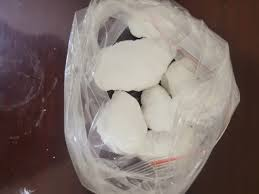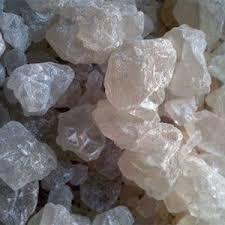Molecular Weight: 265.78 g/mol
Appearance: Typically found as a crystalline powder, hence the name "crystal."
Solubility: Soluble in organic solvents such as ethanol, methanol, and acetone, with limited solubility in water.
Mechanism of Action
4-CL-PVP acts primarily as a central nervous system (CNS) stimulant. The exact mechanism of action is not entirely understood, but it is believed to function similarly to other cathinones by inhibiting the reuptake of monoamine neurotransmitters—dopamine, norepinephrine, and serotonin. By blocking the reabsorption of these neurotransmitters, 4-CL-PVP increases their concentrations in the synaptic cleft, leading to heightened stimulation and euphoria.
Effects and Usage
The effects of 4-CL-PVP can be both stimulating and euphoric, which is why it is often used recreationally. Users report experiencing increased energy, enhanced mood, heightened alertness, and a sense of euphoria. However, these effects can vary significantly depending on the dose, route of administration, and individual physiology.
Common effects include:
Euphoria: A profound sense of happiness and well-being
Increased energy: Users often feel more energetic and capable of prolonged physical or mental activity.
Heightened alertness: Enhanced focus and concentration.
Sociability: Increased desire for social interaction.
Adverse effects can include:
Anxiety: Feelings of nervousness or paranoia.
Insomnia: Difficulty in falling or staying asleep.
Increased heart rate: Tachycardia and palpitations.
Hypertension: Elevated blood pressure.
Hyperthermia: Increased body temperature
Legal Status
The legal status of 4-CL-PVP varies widely around the world. In many countries, it is classified as a controlled substance due to its potential for abuse and lack of accepted medical use. In the United States, for example, many synthetic cathinones, including 4-CL-PVP, are listed as Schedule I substances under the Controlled Substances Act. This classification indicates a high potential for abuse, no accepted medical use, and a lack of accepted safety under medical supervision.
Health Risks and Toxicity
The use of 4-CL-PVP poses several health risks, particularly due to its stimulant nature. Acute toxicity can manifest as severe cardiovascular issues such as tachycardia, hypertension, and even myocardial infarction (heart attack). Neurological effects can include seizures, severe agitation, and delirium. Chronic use can lead to dependence, with withdrawal symptoms that include fatigue, depression, and dysphoria.
Moreover, due to the unregulated nature of designer drugs, the purity and composition of 4-CL-PVP available on the market can vary greatly. This inconsistency increases the risk of accidental overdose and other harmful effects due to potential adulterants.
Pharmacokinetics
Pharmacokinetics, the study of how a drug is absorbed, distributed, metabolized, and excreted in the body, for 4-CL-PVP is not well-documented. However, based on its structural similarity to other cathinones, it can be inferred that 4-CL-PVP is rapidly absorbed into the bloodstream and distributed throughout the body. It likely undergoes hepatic metabolism, where it is broken down into various metabolites, and is excreted primarily via the kidneys.
Safety and Harm Reduction
Given the potential risks associated with 4-CL-PVP use, harm reduction strategies are crucial. These include:
Dose control: Starting with a low dose to gauge individual tolerance
Avoiding polysubstance use: Not combining 4-CL-PVP with other substances, particularly other stimulants.
Staying hydrated: Ensuring adequate fluid intake to mitigate hyperthermia.
Monitoring for adverse effects: Being aware of signs of overdose or severe reactions and seeking immediate medical attention if necessary.
4-CL-PVP Crystal is a potent synthetic stimulant with significant psychoactive effects. While it can induce euphoria and increased energy, its use carries substantial risks, including acute toxicity, potential for dependence, and severe cardiovascular and neurological effects. The variability in legal status and the potential for adulteration further complicate its use and safety profile. As with any substance with abuse potential, understanding the risks and implementing harm reduction strategies is essential for those who choose to use it.
Given the complexity and potential dangers associated with 4-CL-PVP, further research is essential to fully understand its pharmacology, toxicology, and long-term effects. Public health initiatives should focus on education and harm reduction to mitigate the risks associated with its use.







No comments:
Post a Comment